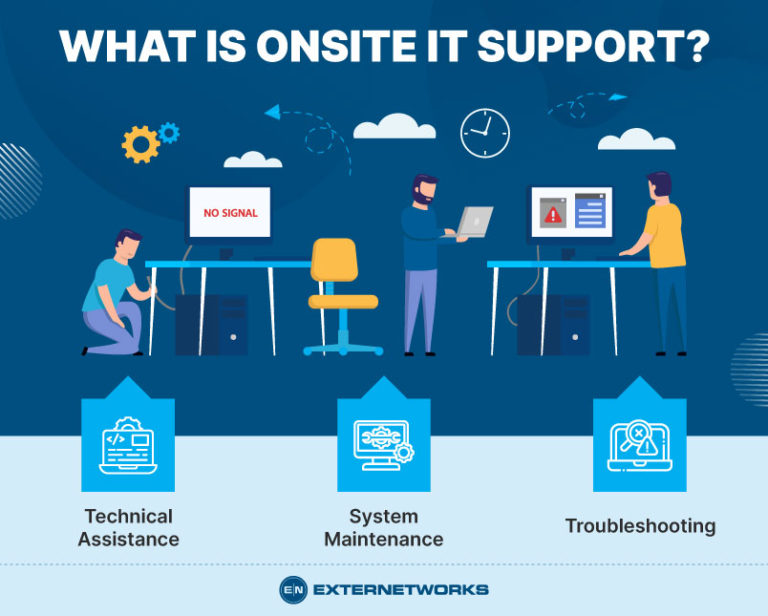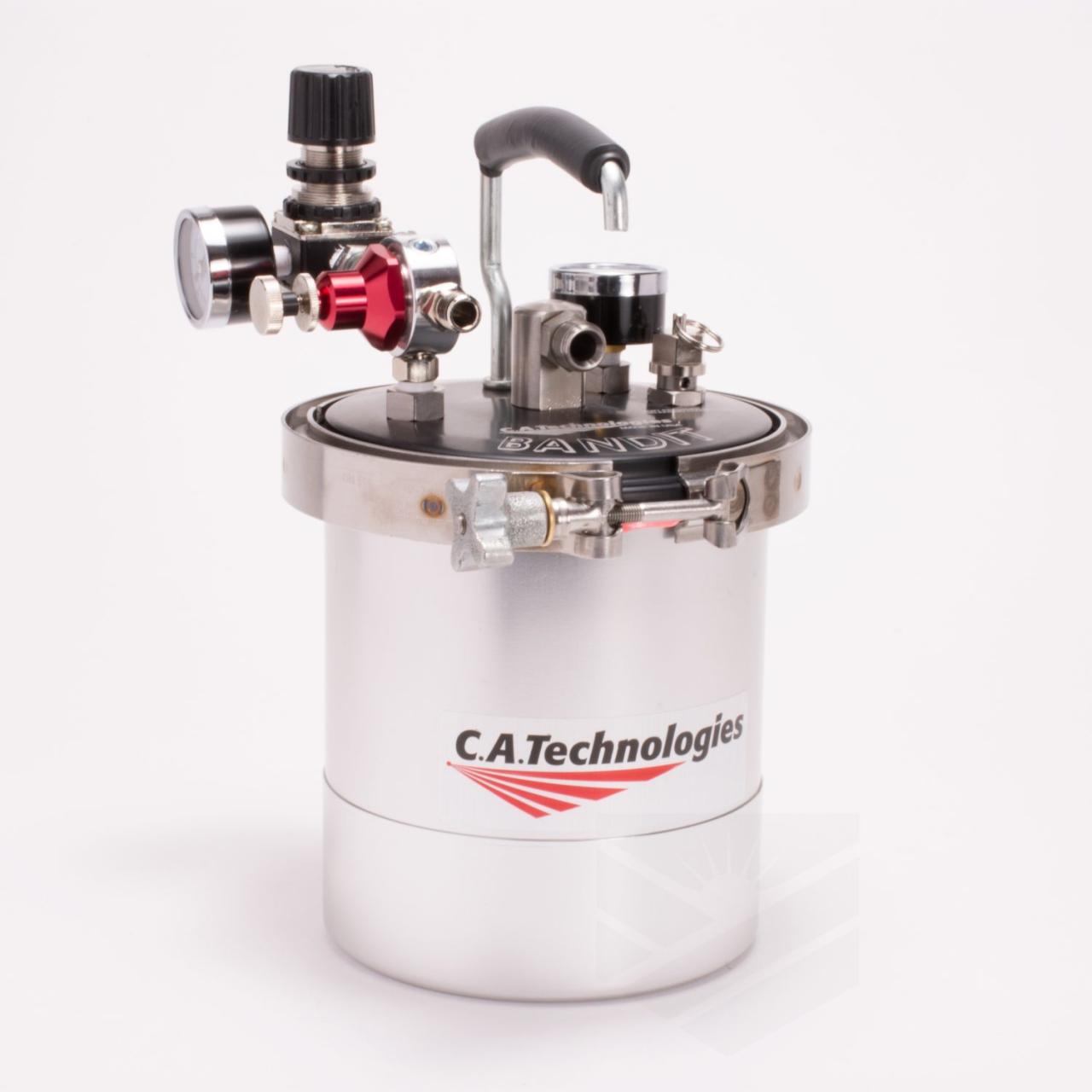Onsite Technology Support: Keeping Your Business Running Smoothly
Onsite technology support is the backbone of a smooth-running business, ensuring your technology operates flawlessly and your employees can focus on their core tasks. Having a dedicated team of experts […]

Onsite technology support is the backbone of a smooth-running business, ensuring your technology operates flawlessly and your employees can focus on their core tasks. Having a dedicated team of experts on-site provides a level of responsiveness and personalized attention that remote support simply can’t match.
Imagine a world where your IT issues are resolved quickly and efficiently, without the frustration of waiting for remote assistance. This is the reality that onsite technology support offers, with technicians readily available to address hardware, software, and networking challenges in real-time.
The Value of Onsite Technology Support
In today’s digitally driven world, businesses rely heavily on technology to operate efficiently and effectively. Onsite technology support plays a critical role in ensuring seamless operations, minimizing downtime, and maximizing productivity.
Impact of Onsite Support on Employee Productivity and Efficiency
Onsite technology support directly contributes to employee productivity and efficiency by providing immediate assistance and problem resolution. When technical issues arise, onsite technicians can swiftly diagnose and address them, minimizing disruptions to workflows and ensuring employees can continue working without significant delays. This rapid response time significantly reduces the time spent troubleshooting and resolving technical problems, allowing employees to focus on their core tasks.
Comparing Onsite Support with Remote Support Options
While remote support offers convenience and cost-effectiveness, onsite support provides several advantages that make it invaluable for certain situations.
- Immediate Assistance: Onsite technicians can physically assess the situation, perform hands-on troubleshooting, and resolve issues quickly. This immediate response time is crucial for critical situations where downtime can be costly.
- Specialized Expertise: Onsite technicians often possess specialized knowledge of the specific hardware and software used within a business. This expertise allows them to diagnose and fix complex problems that might be difficult to address remotely.
- Security and Data Protection: Onsite support ensures physical security of sensitive data and equipment, reducing the risk of unauthorized access or data breaches that can occur with remote support.
- Hardware and Infrastructure Management: Onsite technicians can perform routine maintenance, upgrades, and installations of hardware and infrastructure, ensuring optimal performance and longevity of IT systems.
Industries Where Onsite Support is Crucial, Onsite technology support
Onsite technology support is particularly crucial in industries where downtime can have severe consequences, including:
- Healthcare: Hospitals and clinics rely heavily on technology for patient care, medical records, and critical operations. Onsite support ensures uninterrupted access to medical equipment and systems, preventing delays in treatment and potential safety risks.
- Manufacturing: Production lines rely on automated systems and machinery, requiring consistent and reliable technology support. Onsite technicians can quickly address any issues that arise, minimizing downtime and ensuring production efficiency.
- Finance: Financial institutions handle sensitive data and transactions, requiring secure and reliable IT infrastructure. Onsite support ensures data integrity, security, and compliance with regulations, minimizing the risk of financial losses.
- Education: Schools and universities rely on technology for teaching, learning, and administrative tasks. Onsite support ensures access to educational resources, online platforms, and administrative systems, facilitating smooth operations and student learning.
Choosing the Right Onsite Technology Support Provider

Selecting the right onsite technology support provider is crucial for ensuring seamless operations and minimizing downtime. It’s not just about finding someone to fix your computers; it’s about finding a partner who understands your business needs and can provide reliable, efficient, and cost-effective support.
Factors to Consider
When choosing an onsite support provider, it’s essential to consider various factors that directly impact the quality and effectiveness of their services. These factors include:
- Experience: The provider’s experience in your industry or with similar technology infrastructure is crucial. A provider with extensive experience will have a better understanding of your specific needs and challenges.
- Certifications: Look for providers with relevant industry certifications, such as Microsoft Certified Professional (MCP) or Cisco Certified Network Associate (CCNA). These certifications demonstrate the provider’s expertise and commitment to staying up-to-date with the latest technologies.
- Service Level Agreements (SLAs): SLAs define the service levels, response times, and performance metrics that the provider guarantees. A clear SLA ensures that you know exactly what to expect from the provider and can hold them accountable for meeting their commitments.
Pricing Models
Onsite support providers typically offer various pricing models to suit different business needs and budgets. Understanding the different pricing models and their implications is essential for making an informed decision:
- Fixed Contracts: Fixed contracts provide a predictable monthly or annual cost for a set scope of services. This model is ideal for businesses with predictable IT needs and a stable budget.
- Pay-Per-Incident Fees: This model charges you only when you need support. It can be cost-effective for businesses with infrequent IT issues but can lead to unpredictable costs if issues arise frequently.
Evaluation Checklist
To streamline the evaluation process, it’s helpful to create a checklist to assess potential providers based on key criteria. This checklist should include:
- Experience: Years of experience in your industry or with similar technology infrastructure.
- Certifications: Relevant industry certifications and training programs.
- Service Level Agreements (SLAs): Response times, availability, and performance metrics guaranteed.
- Pricing Models: Fixed contracts, pay-per-incident fees, or other options.
- Customer References: Testimonials and case studies from previous clients.
- Security Measures: Data security policies and practices.
- Communication Channels: Availability and responsiveness of communication channels.
- Reputation: Industry reputation and reviews from other businesses.
Questions to Ask Prospective Providers
When interviewing potential providers, it’s essential to ask specific questions to gather detailed information and evaluate their suitability:
- What experience do you have supporting businesses like ours?
- What certifications do your technicians hold?
- What are your service level agreements (SLAs)?
- What pricing models do you offer?
- Can you provide customer references or case studies?
- What security measures do you have in place?
- How do you communicate with clients?
- What is your approach to troubleshooting and problem resolution?
- How do you handle emergencies and after-hours support?
- What are your availability and response times?
The Future of Onsite Technology Support

The landscape of onsite technology support is rapidly evolving, driven by advancements in cloud computing, automation, and artificial intelligence. As businesses continue to embrace digital transformation, onsite support providers must adapt to meet the changing demands of modern enterprises. This section explores emerging trends and the potential impact of these technologies on the future of onsite support.
The Impact of Cloud Computing
The shift towards cloud computing has significantly impacted onsite technology support. Cloud-based services have enabled businesses to access applications and data remotely, reducing the need for traditional on-premises infrastructure. As a result, onsite support providers are increasingly focusing on managing and troubleshooting cloud-based systems, ensuring seamless integration and performance optimization. For example, a growing number of businesses are leveraging cloud-based platforms like Microsoft Azure and Amazon Web Services (AWS), requiring onsite support providers to possess expertise in these technologies.
Final Review

In an increasingly digital world, the need for reliable onsite technology support is paramount. By choosing the right provider and establishing clear expectations, businesses can unlock the full potential of their technology, maximizing productivity, minimizing downtime, and staying ahead of the curve in an ever-evolving technological landscape.
Onsite technology support often involves troubleshooting hardware issues. One common problem can be faulty connections, especially with devices that use strip technology for power distribution. Identifying and addressing these connection issues quickly is crucial for minimizing downtime and keeping your technology running smoothly.






